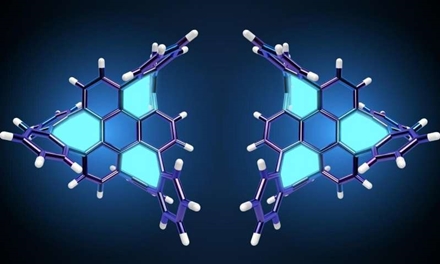|
NOVIDADES
A team of scientists led by Kenichiro Itami, Professor and Director of the Institute of Transformative Bio-Molecules (WPI-ITbM), has developed a new method for the synthesis of three-dimensional nanocarbons with the potential to advance materials science. Three-dimensional nanocarbons, next-generation materials with superior physical characteristics which are expected to find uses in fuel cells and organic electronics, have thus far been extremely challenging to synthesize in a precise and practical fashion. This new method uses a palladium catalyst to connect polycyclic aromatic hydrocarbons to form an octagonal structure, enabling successful three-dimensional nanocarbon molecule synthesis.  A new synthesis method creates curved octagonal structures by linking benzene rings. Credit: Issey Takahashi
However, these have been extraordinarily difficult to synthesize. A particular challenge is the eight-membered ring structure, which appears periodically, necessitating an efficient method for its synthesis. To do so, Dr. Itami's research team developed a new method for connecting polycyclic aromatic hydrocarbons using a palladium catalyst to produce eight-membered rings via cross-coupling, the first reaction of its type in the world. The success of this research represents a revolutionary achievement in three-dimensional nanocarbon molecule synthesis. It is expected to lead to the discovery and elucidation of further novel properties and the development of next-generation functional materials. More information: Satoshi Matsubara et al, Creation of negatively curved polyaromatics enabled by annulative coupling that forms an eight-membered ring, Nature Catalysis (2020), DOI: 10.1038/s41929-020-0487-0.
Institute of Transformative Bio-Molecules (ITbM), Nagoya University. Accessed: August 07, 2020.
|
|||||||||||||||||||||||||